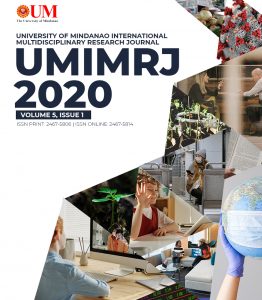John Mark Alcaria
Mathematics and Statistics Department, College of Arts and Sciences, University of Southeastern Philippines, Davao City, Philippines
Anthony Capili
Mathematics and Statistics Department, College of Arts and Sciences, University of Southeastern Philippines, Davao City, Philippines
DOI: https://doi.org/10.53899/spjrd.v27i1.172
Abstract
This study aims to investigate and find a suitable model for forecasting the leptospirosis incidence in the Philippines. The Box-Jenkins approach was utilized in the development of an appropriate model. The dataset was retrieved from the Epidemiology Bureau of the Department of Health containing the weekly number of leptospirosis cases in the Philippines from 2016 to 2018. This dataset was analyzed using the R software. The original series is nonstationary with indications of non-constant variance. Box-Cox transformation and ordinary differencing were performed on the series. The transformed series was analyzed and the results show that ARIMA(0,1,0) or the random walk model is the most appropriate model for forecasting leptospirosis incidence. The residuals and forecast errors of the fitted model behave like a white noise process. The fitted model may be used for forecasting the future number of leptospirosis cases in the Philippines.
Keywords: forecasting, Box-Jenkins method, leptospirosis, random walk, epidemiology, Philippines
![]()

